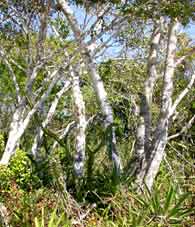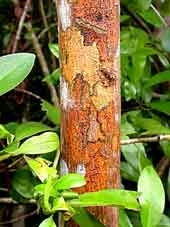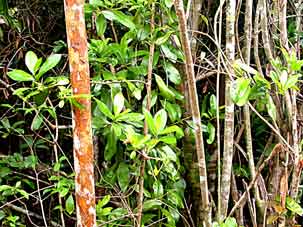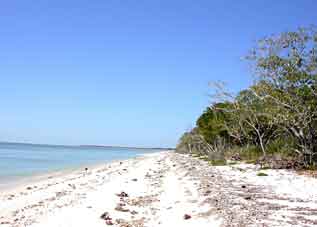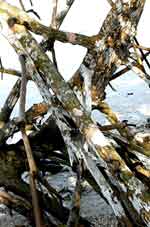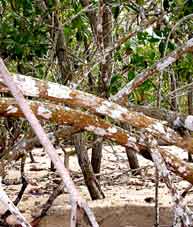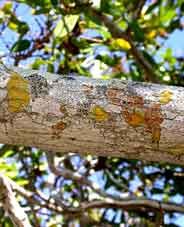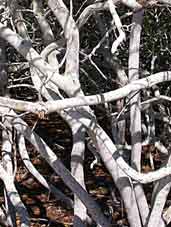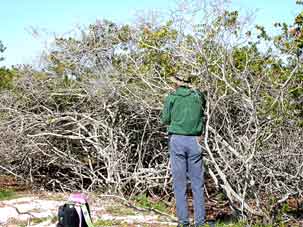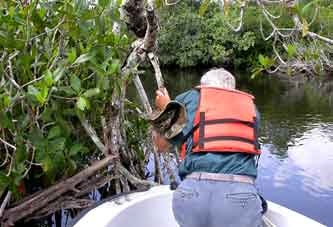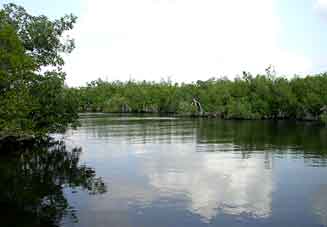SEAVEY
LICHEN
IMAGES
Guides
Lichen
Habitats
SUBTROPICAL FLORIDA LICHEN HABITATS
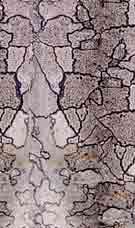
Lichens are found just about everywhere in subtropical Florida. Some of
the richest places are cypress wetlands, coastal mangroves and hammock and
bayhead edges.
It is too early in our study to associate lichen and tree species extensively; however, obvious very specific associations exist. Some are found in open areas with lots of sun, while others frequent shaded hammock interiors. To date, some have been found only on dahoon holly, a medium size tree. Others apparently exist only in seaside locations, (Amandinea milliaria, for example).
The photo to the left is of
lichens on Jamaican dogwood, Piscidia piscipula, at a seaside hammock
edge.
Pointing the mouse at any picture below will provide a description of the
habitat.
